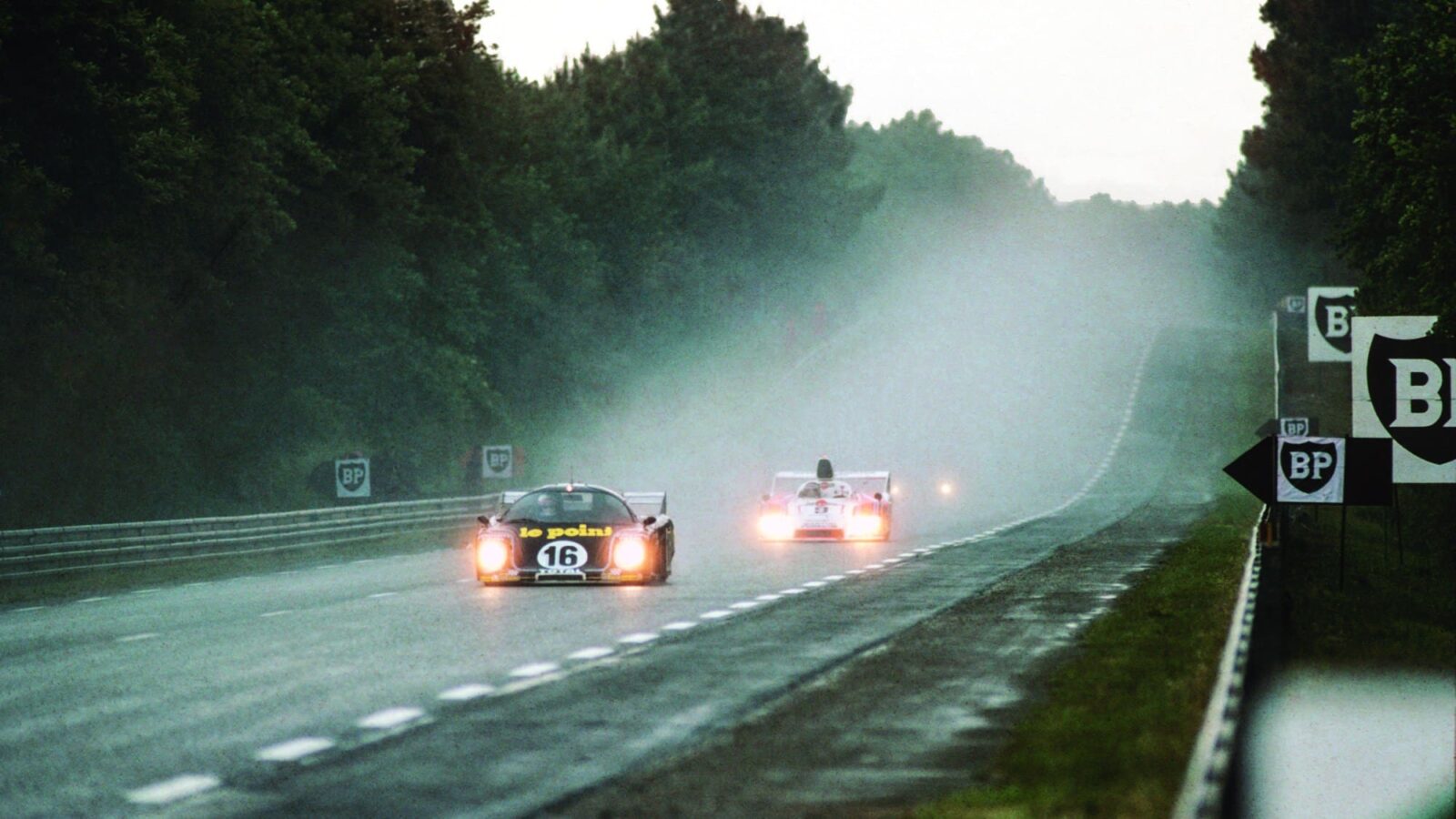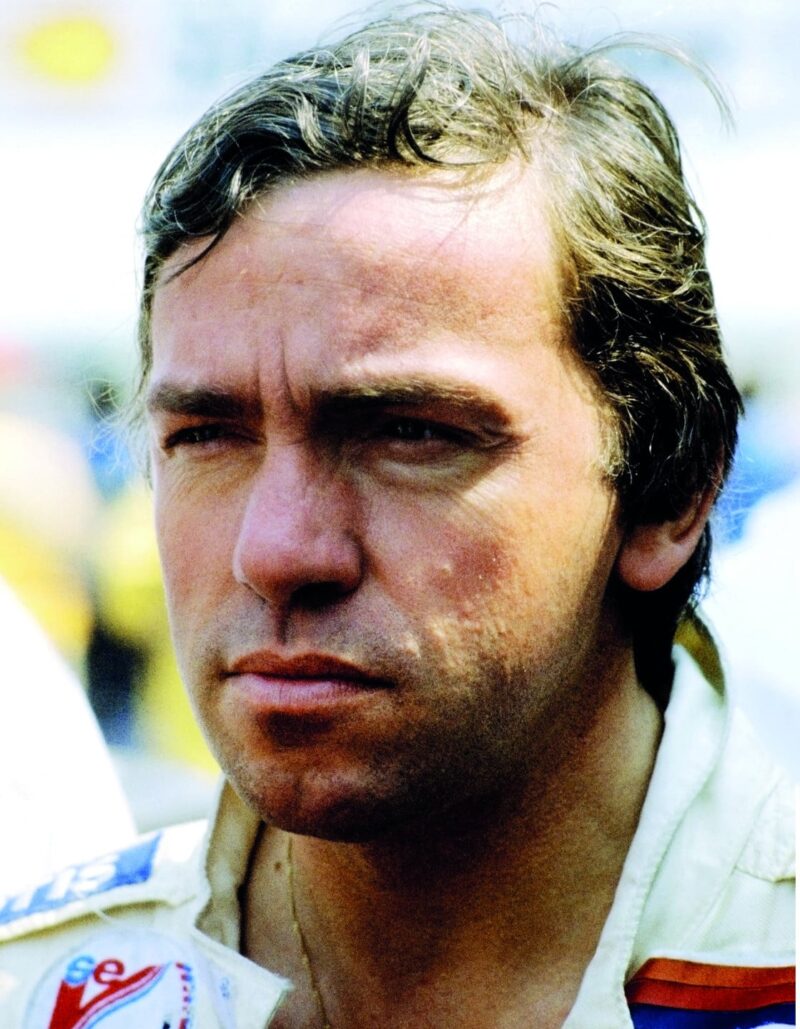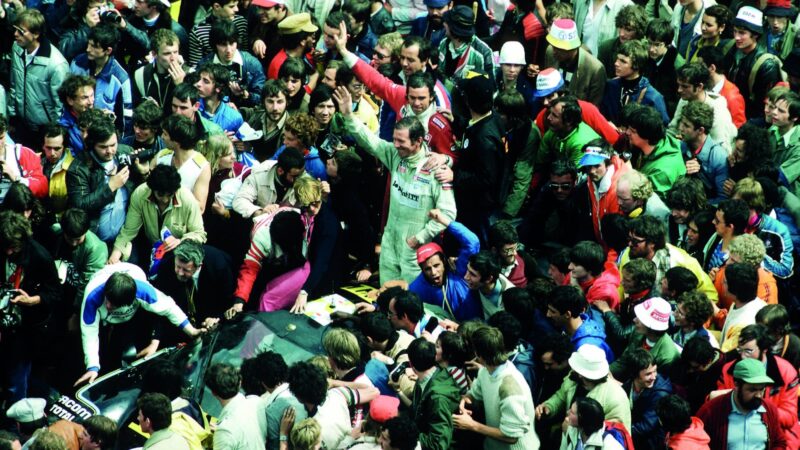Jean Rondeau's 1980 Le Mans garagista win
With Jim Glickenhaus taking on the major manufacturers this year, Gary Watkins looks back to 1980 when local-boy privateer Jean Rondeau upset the odds in a car bearing his own name

The Rondeau M379 was up against stiff competition in the wet from Joest’s 908/80.
DPPI
The story of Jean Rondeau, the last garagista to win the Le Mans 24 Hours, is a tale of grit, determination and against-the-odds endeavour that propelled the Frenchman from near-obscurity to national fame in the space of a few short years. Like Jim Glickenhaus today, he was a driven man with a big ambition — to conquer the world’s greatest endurance race.
But this son of Le Mans, who first visited his home race as a small child, didn’t set out to win the French classic as a constructor, the feat that secured him a place in the record books as the only man to triumph in a car bearing his own name. He was consumed by winning as a driver. Building his own cars was simply a means to an end for Rondeau.
And a necessary one. Rondeau wasn’t going to acquire the kind of drive necessary for him to win Le Mans based on his early exploits at the Circuit de la Sarthe. His debut in 1972 was undistinguished, save for getting hit on the helmet by a bird on the Mulsanne Straight in the open-top Chevron-Cosworth B21 in which he’d rented a seat. On his return to the big race over the following three years, he failed to qualify, finished a distant 19th and retired shortly after the halfway mark.
Rondeau was a driver of modest natural talents, and his career and his quest were, it seemed, going nowhere. The late Brian Kreisky, who brokered the deal for him to race the Chevron in 1972, remembered the Frenchman being “slow, very slow”.

Jean Rondeau had long dreamed of winning the world’s greatest endurance race. His victory as driver and constructor is unique
DPPI
There were a couple of seasons racing with some success in a one-make series for the Mini Innocenti backed by the French British Leyland importer, but his credentials weren’t going to propel him into a top seat at Le Mans. So Rondeau took matters into his own hands. He became a team owner and constructor.
“It wasn’t his original plan to build his own car,” says four-time Le Mans winner Henri Pescarolo, who would make six of his 33 starts in the great race driving for Rondeau’s team. “The only reason he decided to build his own car was that he knew he was never going to land a drive in a car good enough to win the race.”
When Le Mans ’76 rolled around, Rondeau was on the grid in one of two new prototypes built for the new GTP class by his own organisation. Rondeau’s fledgling team had designed and developed the Cosworthengined machine, but the car didn’t carry his moniker. The name on the nose was Inaltéra, a manufacturer of wallpaper run by racing enthusiast Charles James.
That March he had unveiled the car at a glitzy launch in Paris and revealed an impressive driver roster boasting some of the biggest names in sports car racing from his homeland. Pescarolo, F1 grand prix winner Jean-Pierre Beltoise and Jean-Pierre Jaussaud, who had driven his first Le Mans in 1966, had all been persuaded to be part of his new adventure.
“I had a very good offer from Porsche, but Jean was very persuasive,” recalls Pescarolo. “He talked of an all-French project, and he was also offering quite a lot of money for that time.”

National heroes
DPPI
Rondeau was a persuasive, even charismatic man. Lucien Monte, a long-time engineer with the Rondeau operation, reckons his employees would have walked over hot coals for their boss: “He would ask a lot of everyone, but we all thought he was fantastic.”
That loyalty, combined with Rondeau’s drive, meant he was able to relaunch his company after two encouraging Le Mans campaigns that yielded a pair of GTP class victories and a fourth overall. James sold Inaltéra, its new owners didn’t want to continue racing, and Rondeau had to start again from scratch.
From 1978, his cars were now Rondeaus. The team could and arguably should have won Le Mans in ’79. His M379, another Cosworthengined machine, was well-placed on Sunday morning when team-mate Jacky Haran crashed out. The winning Kremer Porsche 935 K3 would go on to spend an hour parked at the side of the Mulsanne Straight undergoing ad hoc repairs in the closing stages…
A year later, Rondeau put things right. He and Jaussaud came out on top in a battle with the Joest Racing Porsche 908/80. The Rondeau had a starter motor glitch, which is why Jaussaud stayed on slicks through a series of showers over the closing stages. Jaussaud spun on the final lap, but was able to continue to score a famous victory.
The following week, Rondeau, Jaussaud and their Rondeau M379 were feted by president Valéry Giscard d’Estaing at the Élysée Palace. A driver nicknamed ‘Bird Brain’ after his avian contretemps eight years before was now a national hero who’d left his mark on Le Mans history.
